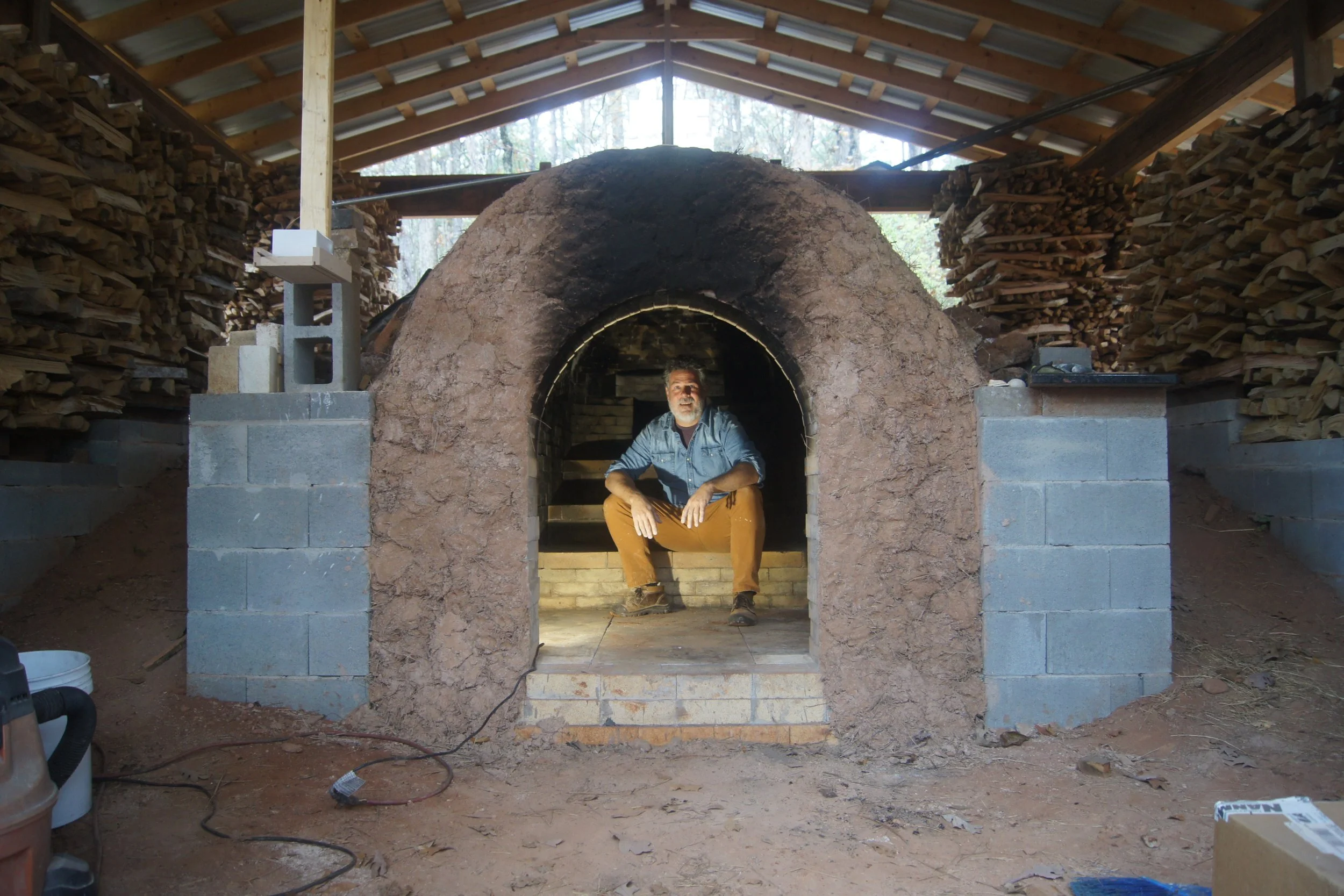Austin Lindsey
Anagama: Newnan, Georgia, USA
What is a kiln? I think of it as a test or a trial where flaws and weaknesses are revealed. On the other hand, the clay is transformed from an impermanent state to an enduring one. It transcends and becomes eternal- very similar to our lives here. We have always had the pottery of ancient civilisations to understand who we are and what makes us human! If everything goes well, some of the work is favored with something special that is unlikely to happen again. Some clay is destined for common usage and some for noble purposes.
Historically, Anagamas were first used in Japan around the 6th century. Originally they were merely tunnels dug in the base of a clay hill with an exit at the top of the hill for a chimney. Later, they were lined with hand-formed bricks so they would endure longer. In modern times they tend to be only half submerged, however the bricks used are far more insulative and refractory. All of the draft is one directional and affects the ware accordingly. One side tends to be covered by ash glaze and the other side is dryer and with the effects of localized areas of reduction and oxidation, called flashing. Patinas that look metallic can be created in areas where the coals have been built up against the ware, and cooled slowly. While you won't know exactly what a piece will look like, you can gauge what effects happen in various locations in the kiln. Over the course of several days the kiln is fed the wood fuel. It is like a living entity that requires constant attention and sensitivity to its needs. You use all of your senses to fire it, even a psychic sense.
I built my 1st kiln when I was 24 years old in Oviedo, Florida. My first teacher told me, “building kilns is what potter’s do.” My current kiln is the 3rd personal kiln that I have built. I have used all kinds of kilns, but the anagama is the most satisfying. It’s a huge undertaking that requires a community. It connects you to history as far back as the caveman. It is a cave! My introduction to this method of firing was in helping Hadi Abbas, Professor of ceramics at UCF, build and fire his anagama. Helping him landed me a one year apprenticeship with Peter Callas, who built the first anagama in the US in 1976. The year I spent at Callas’s was routinely filled with trips to NY City museums and galleries, and conversations about Muromachi and Momoyama storage jars, Japanese aesthetics in general, as well as gardening. That was 25 years ago now and I am still intrigued by these things.
Over 30 years I have made tens of thousands of decorated functional pottery using gas and electric kilns. I made some very successful work, and I got to see what I am capable of. However, I have found what interests me more is that my spiritual life of faith be married to my making. And part of that is trusting in the creator to show up when you need the most. It means that I want my work to have His influence and less of mine. By restricting some of my intentions for the work and giving it up to the Mystery and the science inside the kiln there is room for Him to move. My first firing in this kiln was actually disastrous. It was gut wrenching for months afterward however, I have come to learn some very foundational things about clay and high temperature atmospheres. I have also learned how to endure the failure of a major undertaking and move forward. The anagama requires blood, sweat, tears, and time. You might only get a few good pieces and all your other ideas get trashed. It is helpful to always know that you are doing something because you love it.

